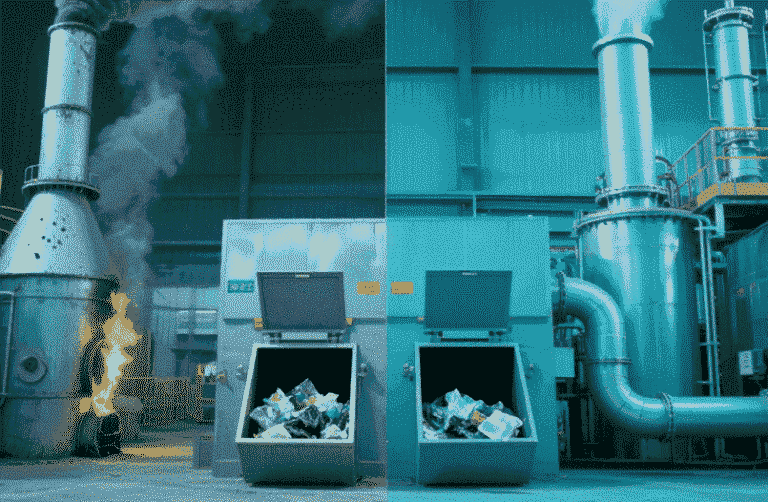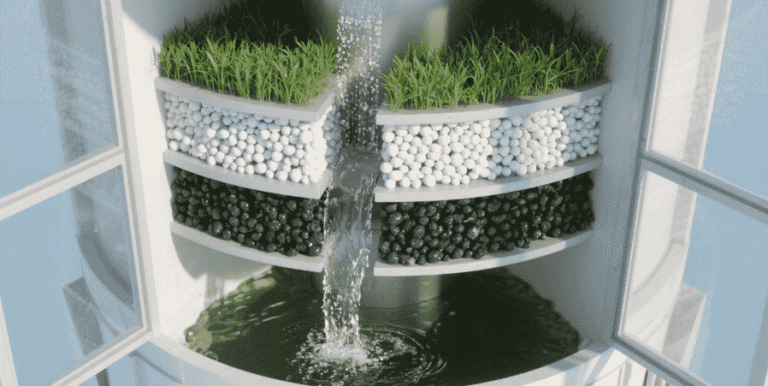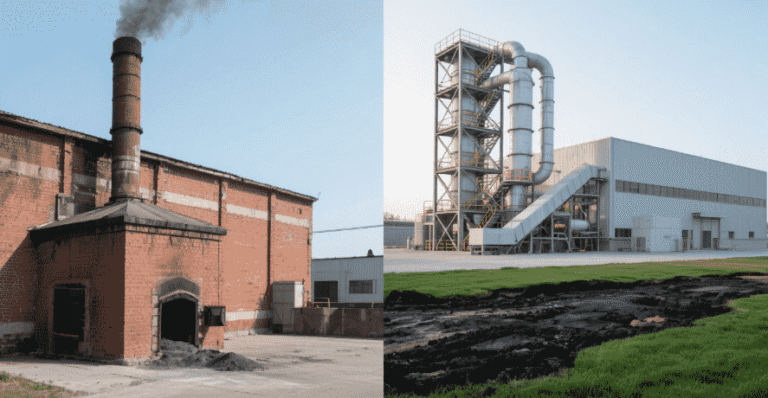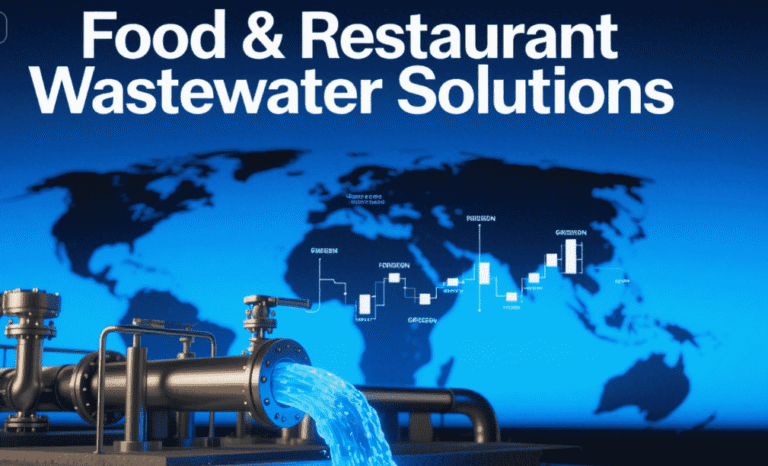Welcome to My Blog! 🌟
I’m so glad you’re here! Before we jump into the exciting content, I’d love for you to connect with me on my social media platforms. It’s where I share extra insights, interact with our amazing community, and post regular updates. Here’s how you can join the conversation:
📘 Facebook: Follow me on Facebook for more updates
Now, let’s dive into the journey ahead. I hope you find everything here both engaging and valuable. Together, let’s explore, learn, and grow! 🚀
Table of Contents
Introduction
Grease traps, also known as grease interceptors, are plumbing devices designed to capture grease and solids before they enter the wastewater system. They are particularly important in commercial kitchens, where grease from cooking and food preparation can accumulate and cause blockages in plumbing systems. However, grease traps are just as useful in residential settings, especially in homes with septic systems.
In this article, we’ll answer the question: What is a grease trap? We will explore its functionality, the benefits it provides, and why you should consider installing one if you haven’t already.
What is a Grease Trap?

When it comes to managing kitchen wastewater, especially in commercial food establishments, one of the most important devices to install is a grease trap. So, what is a grease trap exactly? A grease trap is a specialized plumbing device that is designed to intercept and collect grease, fats, and oils before they can enter the main wastewater disposal system. These substances, collectively known as FOGs (fats, oils, and grease), are byproducts of cooking and food preparation that can cause serious issues in drainage systems if not properly managed.
Grease traps have been used for decades, and their purpose remains vital: to separate grease and solid food particles from wastewater. When wastewater containing grease flows into the trap, the trap slows the water flow, allowing the grease to rise to the surface. Since grease is lighter than water, it naturally floats, while solids settle at the bottom. The remaining water exits through the outlet pipe, leaving behind a collection of grease and solids that must be removed periodically.
Understanding what is a grease trap also involves understanding its significance in preventing costly plumbing issues, reducing environmental impact, and ensuring regulatory compliance.
How Does a Grease Trap Work?
Once you’ve answered the question “what is a grease trap,” the next step is understanding how it actually functions. The working principle of a grease trap is based on the simple concept of density separation. Grease traps are typically installed under sinks, in basements, or outside buildings, depending on their size and purpose.
Wastewater enters the grease trap through an inlet pipe, flowing into a large chamber where the flow rate is significantly slowed. As the water slows down, the separation process begins: lighter grease and oils float to the top, while heavier particles and solids sink to the bottom.
The clarified water, now significantly cleaner and free of most grease, exits through an effluent outlet. In the middle of this system, baffles play a crucial role by directing the flow and minimizing turbulence, which helps maintain a clear separation between layers.
Key Components of a Grease Trap
To better understand what is a grease trap, it’s essential to recognize the parts that make it work effectively:
- Inlet Pipe: The entry point for greasy wastewater from the kitchen.
- Grease Retention Area: The chamber where grease and oils are collected and retained.
- Effluent Outlet: The outlet through which treated water flows out of the trap.
- Baffles: Internal barriers that help control the flow and improve the efficiency of grease separation.
The size and complexity of a grease trap can vary depending on the intended use. Small residential units may only consist of a few liters in capacity, while large commercial models can handle hundreds of gallons of wastewater daily.
Why You Need a Grease Trap Now
Now that we’ve explored what is a grease trap, it’s time to look at why having one installed is more critical than ever—especially in today’s kitchen environments where food waste is abundant and environmental responsibility is increasingly emphasized.
- Prevent Clogging and Blockages
One of the most immediate reasons to install a grease trap is to prevent clogs. Without a grease trap, fats, oils, and grease can accumulate on the inside of pipes, gradually narrowing the passage and eventually leading to severe blockages. These blockages can cause kitchen downtime, slow drainage, overflows, and costly emergency repairs. Knowing what is a grease trap and how it works helps you stay ahead of these problems. - Compliance with Health Regulations
If you operate a restaurant, café, or any kind of food-related business, you are likely required by local health departments and building codes to install a grease trap. Authorities understand what is a grease trap and its importance in preventing public sewer overflows and system damage. Non-compliance can result in steep fines or even business closures. - Environmental Benefits
When grease enters the municipal sewage system, it can cause blockages at treatment plants, lead to sanitary sewer overflows (SSOs), and pollute local water sources. Learning what is a grease trap and using it effectively is one of the easiest ways to protect the environment from these harmful effects. - Cost-Effective Waste Management
Grease traps may seem like an additional expense, but they can actually save you money in the long run. Plumbing repairs caused by grease buildup are often expensive. Moreover, traps reduce the frequency of pipe cleanings and maintenance. Understanding what is a grease trap is understanding that it is an investment in long-term operational savings.
Common Problems Caused by the Lack of a Grease Trap
If you’re still asking what is a grease trap and whether you need one, consider the numerous problems that arise in its absence:
- Foul Odors: The decomposition of grease in pipes can produce unpleasant smells.
- Slow Drainage: Grease buildup can restrict water flow, leading to slow drainage.
- Damage to Plumbing: Over time, the accumulation of grease can corrode pipes and cause significant damage.
- Health Hazards: The presence of grease in the wastewater system can lead to hygiene issues and potential contamination.
All of these issues can be mitigated by understanding what is a grease trap and ensuring that your facility has one properly installed and maintained.
Grease Trap Maintenance: How to Keep It Working Efficiently

Once installed, grease traps require ongoing care to function at their best. Simply knowing what is a grease trap is not enough—you must also understand how to maintain it properly.
- Regular Cleaning: Depending on the usage, grease traps should be cleaned at least every 1-3 months.
- Monitor Grease Levels: Some modern grease traps come with monitoring systems that alert you when the trap is full. If your unit doesn’t have a monitor, manual checks should be scheduled. Knowing what is a grease trap includes understanding its maintenance schedule.
- Proper Disposal: Ensure that the grease and solids removed from the trap are disposed of properly, as improper disposal can lead to environmental contamination.
Table: Different Types of Grease Traps and Their Features
| Type of Grease Trap | Size (Capacity) | Best for | Maintenance Frequency | Installation Cost |
|---|---|---|---|---|
| Indoor Grease Trap | Small to Medium | Residential kitchens | Every 1-3 months | Low |
| Commercial Grease Trap | Large | Restaurants, Cafes, Hotels | Monthly | Medium to High |
| Interceptor Grease Trap | Very Large | Large commercial operations | Monthly to Quarterly | High |
This table can help you determine the best type of grease trap based on your needs, the size of your establishment, and how often you plan to perform maintenance.
Conclusion
In summary, a grease trap is a valuable investment for both residential and commercial properties. It helps prevent costly plumbing issues, ensures compliance with health codes, and protects the environment. Regular maintenance and proper disposal of grease are essential to keep the system working efficiently.
If you haven’t yet installed a grease trap in your kitchen or restaurant, now is the time to do so. Not only will it save you money on repairs, but it will also contribute to a cleaner, more sustainable environment.
FAQ
How do I know if my property needs a grease trap?
If you operate a commercial kitchen, restaurant, or have a septic system at home, a grease trap is often required by law to ensure proper waste management.
How often should I clean my grease trap?
It’s recommended to clean a grease trap every 1-3 months for residential properties and more frequently for commercial kitchens.
Can I install a grease trap myself?
While some homeowners may be able to install small, indoor grease traps, it’s generally recommended to hire a professional for larger installations to ensure proper functionality.
How can I dispose of grease from my grease trap?
Grease should be disposed of by contacting a waste management service that handles grease disposal or by taking it to a certified recycling center.
Are there any alternatives to grease traps?
While grease traps are the most effective solution, some systems may use grease recovery devices or grease removal units for specific applications, particularly in larger establishments.






